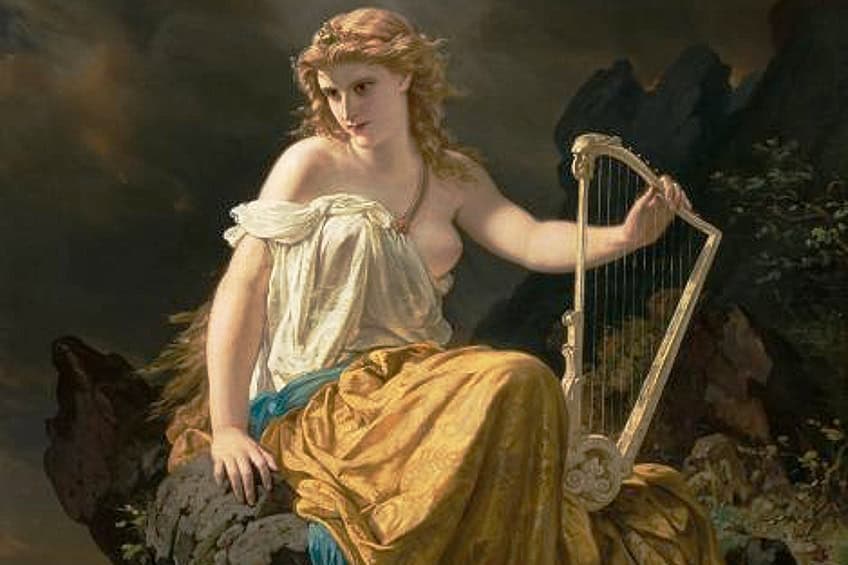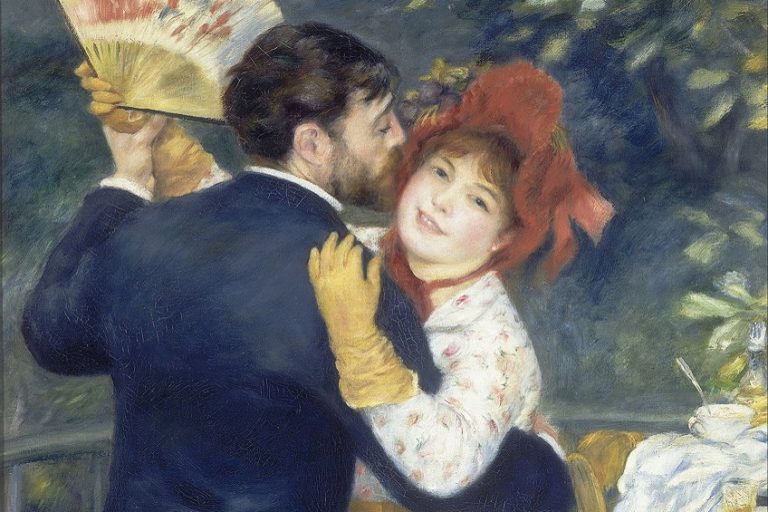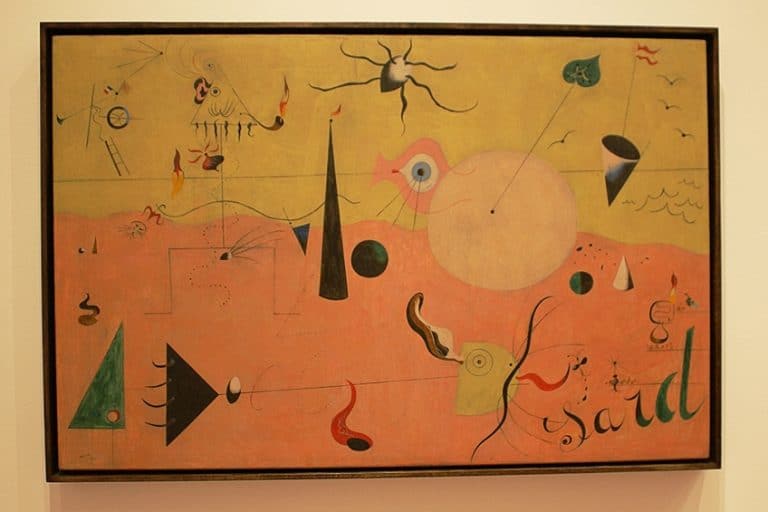“Muse with a Lyre” by Clemens Bewer – A Quick Analysis
Muse with a Lyre is a captivating artwork by Clemens Bewer that embodies the essence of classical mythology and artistic inspiration. Created with meticulous detail and a deep understanding of Greek mythology, Bewer’s depiction of the muse with her lyre evokes a sense of creativity and divine influence. The piece not only showcases Bewer’s technical prowess but also his ability to breathe life into mythological subjects, making them relevant and engaging for contemporary audiences.
Key Takeaways
- Clemens Bewer’s painting, Muse with a Lyre, epitomizes the romantic allure of mythological art in the 19th century.
- The artwork demonstrates exceptional detail and classical style, confirming Bewer’s skill in oil painting.
- Muse with a Lyre has a notable history in the art market, reflecting its significance and desirability.
Artist and Historical Context
| Artist | Clemens Bewer (1820 – 1884) |
| Date Created | 1867 |
| Medium | Oil on canvas |
| Genre | Classical art and Mythological painting |
| Period/Movement | Contemporary |
| Dimensions (cm) | 147.3 x 109 |
| Series/Versions | Single version, no known series |
| Where Is It Housed? | Private collection |
| What It Is Worth | Not specified |
The painting, Muse with a Lyre, establishes its presence in the artistic canon as a hallmark of Clemens Bewer’s oeuvre. Created in 1867, this oil on canvas showcases Bewer’s classical style, which pays homage to the romanticized grandeur of ancient mythological figures. Bewer, a German artist born in 1820, was notably influenced by the rich cultural milieu of the 19th century Europe—a period when the revival of classical themes was prevalent among artists who sought to capture the beauty and allegory of ancient lore through their work.
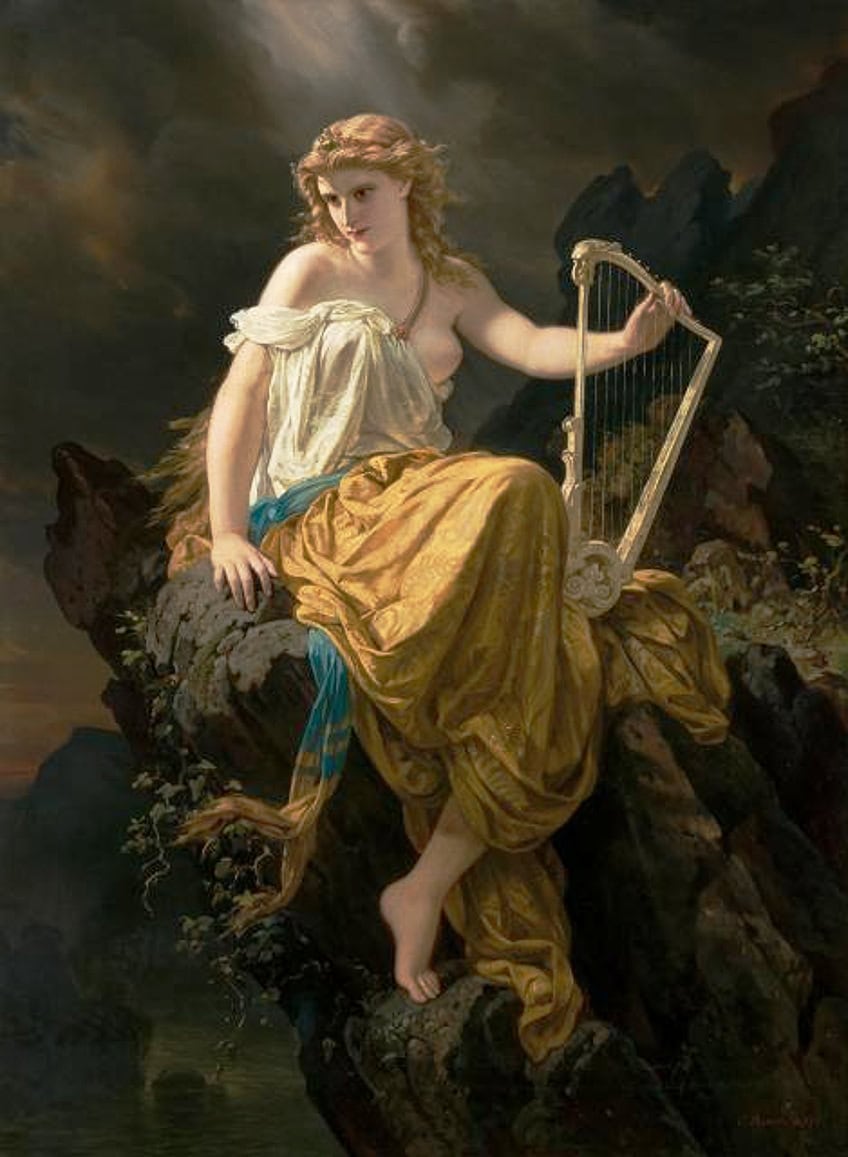
Muse with a Lyre resonates with art connoisseurs and collectors for its depiction of poetic grace and artistic inspiration—as muses in Greek mythology are synonymous with the stimulation of creative endeavors. This piece in particular captures the rich, textural details of the muse’s attire and the intricate carvings of the lyre, exuding a certain depth and solemnity. Technique and skill interlace to form an endearing representation of mythological subject matter which, over time, has garnered attention in the art market, as is evidenced by its appearance in auctions and the art collection circuit.
Clemens Bewer’s Life and Career
Clemens Bewer was born on May 30, 1820, in Aachen, Germany. His artistic journey commenced under the guidance of Karl Ferdinand Sohn at the Kunstakademie Düsseldorf. Bewer’s quest for artistic growth later led him to Paris and Rome, where he continued his studies. The Romantic style, dominant during his formative years, profoundly influenced his artistic approach, which is evident across his historical and portrait paintings. Bewer’s talent captured the essence of Romanticism, a movement that cherished emotion and individualism, through a prolific catalog of work that spanned both historical narratives and portraiture.
He integrated these elements into the characterization and setting of his compositions, rendering works that resonated with the Romantic spirit of his time.
Significance of Muse with a Lyre in Bewer’s Oeuvre
Muse with a Lyre, painted in 1867, is one of Clemens Bewer’s signature works. This oil on canvas painting, measuring 58 x 42 7/8 inches (147.3 x 109 cm), showcases a muse with a lyre, which is often associated with the ancient Greek muse Erato, the muse of lyric poetry. The presence of the lyre serves not just as a classical attribute but also as a symbol of the artist’s connection to the arts, and particularly the intertwining of visual arts with music and poetry.
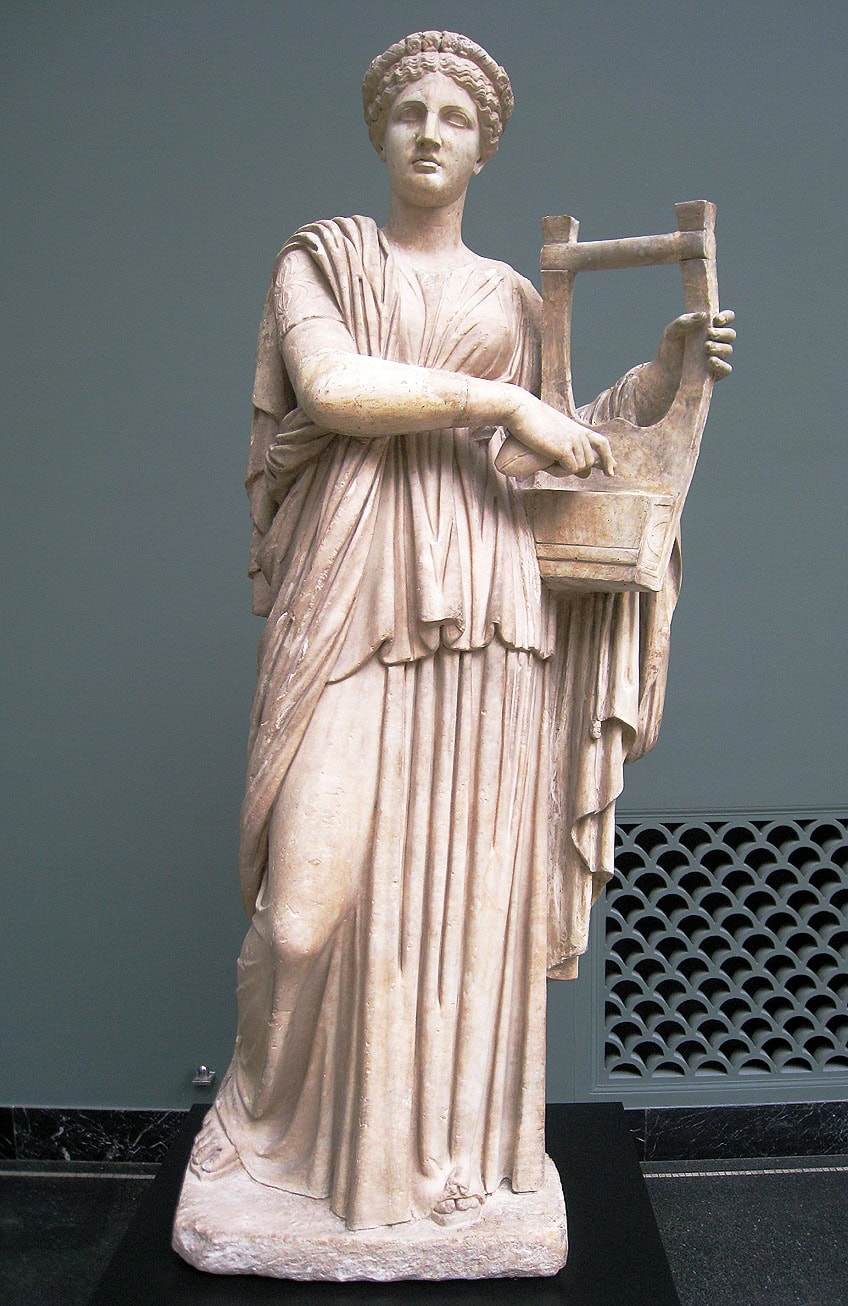
This painting holds a significant place in Bewer’s oeuvre as it reflects his commitment to capturing the ideals and aesthetics of his era. Muse with a Lyre also emphasizes the role of the artist as an intermediary between the art and the audience, often manifesting in allegorical and historical subjects that were both revered and commonplace in Romantic-era artworks.
Physical Attributes of the Artwork
Muse with a Lyre by Clemens Bewer is distinguished by its attention to detail and use of classical techniques. This analysis covers the critical aspects of the physical attributes, from the subject matter to the framing.
Subject Matter
Muse with a Lyre captures a figure often interpreted as one of the nine muses of classical mythology, commonly associated with arts and music. The muse is depicted with a lyre, underscoring her musical attributes.
Use of Color
Bewer’s palette is rooted in the Romantic tradition, utilizing a harmonious blend of naturalistic tones that give the painting a soft and balanced appearance. The colors serve to enhance the ethereal quality of the muse.
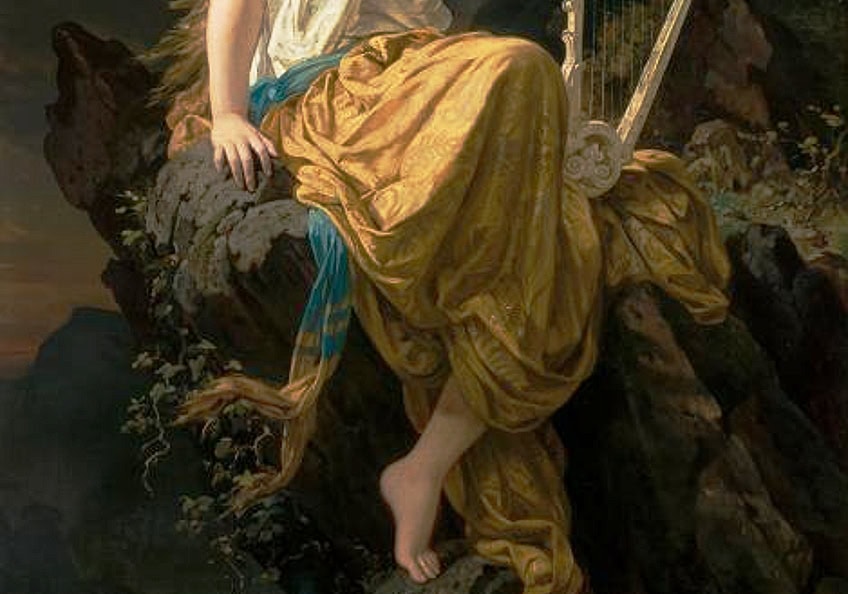
Use of Lighting
Bewer employs a subtle use of lighting to create depth and accentuate the figure of the muse. Light appears to emanate from the muse herself, emphasizing her divine nature within the artwork.
Medium and Technique
The artwork is executed in oil on canvas, showcasing Bewer’s skill with traditional painting techniques. Fine brushwork is evident throughout, displaying meticulous attention to detail in the muse’s attire and the lyre.
Dimensions and Framing
- Size: The specific dimensions of the canvas are not given, but typical works by Bewer suggest a modestly sized portrait.
- Frame: Usually, a work from the 1860s would be framed in a period-appropriate style, which might be ornate and gilded, although the exact framing of this work is not described.
- Condition: While no condition report is directly provided in the search results, the artwork likely shows some wear and tear commensurate with its age. Potential buyers would be advised to review the condition report for any damage or restoration, and understand that they might be acquiring the piece “as is” regarding liability.
Provenance and Documentation
This section examines Muse with a Lyre by Clemens Bewer, specifically addressing its history of ownership, detailing its condition alongside any restoration efforts, and exploring its authenticity through archival research.
History of Ownership
Muse with a Lyre was once part of a private collection in Atlanta, Georgia. The artwork changed hands when it was sold at an auction held by Doyle in New York on October 10, 2018. The painting found its way into the auction as Lot 1014 and was attributed to have come from the property of a gentleman from Atlanta.
Condition and Restoration
The condition report for the painting was included in the auction catalog from Doyle and is a critical piece of documentation for assessing the painting’s state over time. The search results didn’t specify the painting’s condition or restoration efforts.
Such reports usually cover past restorations and current preservation needs.
Authenticity and Archival Research
Authenticity assessments and archival research are significant in verifying the origins and legitimacy of Muse with a Lyre. The painting is signed and dated by Bewer, establishing a direct connection to the artist. Museums and art reference sources such as MutualArt provide additional documentation, ensuring that the artwork is catalogued and its provenance traceable within art historical contexts.

Acquisition and Market Insights
Muse with a Lyre by Clemens Bewer has a notable presence in the art market, with its value and demand being discernible through its auction history and current trends. Collectors and enthusiasts are likely to encounter this piece in high-profile auction platforms such as Doyle, where it has been previously sold.
Sale and Auction History
Muse with a Lyre, an 1867 oil on canvas painting, has been placed under the gavel on several occasions. The artwork measures 58 x 42 7/8 inches (147.3 x 109 cm) and is prominently signed by the artist. One artnet source mentions its appearance in a Doyle New York Fine Paintings auction on October 10, 2018. The historical prices at auction for Clemens Bewer’s works have ranged significantly, with some reaching up to $30,000 USD. This pricing variability indicates a robust, albeit fluctuating, interest in his art.

Current Market Valuation and Trends
As for the current valuation, Muse with a Lyre and its market trends can be partially inferred through alerts and databases that track artist’s exhibition and auction features. Platforms like MutualArt and Artsy provide such services, offering market alerts and access to detailed auction price databases for subscribed or interested parties.
Given the historical auction outcomes and the stature of the artist, Clemens Bewer’s artworks, including Muse with a Lyre, remain on the radar of collectors and art investors, maintaining a steady interest within the art market domain.
The Artwork Today
Muse with a Lyre by Clemens Bewer is a noteworthy artwork that continues to resonate with art enthusiasts and collectors. Crafted in 1867, this oil on canvas stands as a testament to Bewer’s artistic skills and has garnered attention in the art market, as evidenced by its presence in auctions. The artwork integrates themes of classical inspiration, represented by the muse, and romanticism, prevalent in the 19th century. The lyre, a classical symbol of music and poetry, adds depth to the subject matter.

Its current location is not publicly listed, which suggests the artwork may be held in a private collection or awaiting its next public exhibition. Recent auctions have seen Bewer’s work change hands, indicating a sustained interest in his oeuvre. For example, on April 27, 2021, Muse with a Lyre, from the same year, was auctioned. Those interested in viewing or purchasing works by Clemens Bewer can explore various art platforms and galleries, where his artworks are showcased, albeit availability may vary depending on ownership and exhibition schedules.
Muse with a Lyre stands as a testament to Clemens Bewer’s mastery in capturing the timeless allure of classical mythology and artistic inspiration. Through meticulous detail and a profound connection to Greek mythology, Bewer’s artwork resonates with viewers, inviting them into a world of creativity and divine influence. Its enduring relevance and ability to evoke emotions make Muse with a Lyre a captivating piece that continues to inspire and engage audiences, showcasing Bewer’s lasting impact on the world of art.
Frequently Asked Questions
Who Was Clemens Bewer and What Is His Significance in Art History?
Clemens Bewer was an artist whose works, including the notable Muse with a Lyre from 1867, have been recognized for their aesthetic and historical value. The artist’s contributions to the art world during his period add to the rich tapestry of 19th-century European art.
In What Art Movement Is Muse with a Lyre by Clemens Bewer Categorized?
Muse with a Lyre by Clemens Bewer is typically associated with the styles and sensibilities of the 19th-century European art movements. However, specific documentation from the search results does not distinctly categorize it into a particular art movement.
What Are the Notable Characteristics of Muse with a Lyre?
The artwork is an oil on canvas painting measuring 58 × 42 9/10 inches (147.3 × 109 cm). It exhibits the fine craftsmanship of Clemens Bewer and depicts one of the nine muses, goddesses of the arts, with a lyre—symbolic of musical talent.
How Has Muse with a Lyre Influenced Modern Art?
The impact of Muse with a Lyre on modern art is not explicitly detailed in the provided information. Typically, historical works like those of Clemens Bewer contribute to the broader narrative of art evolution and can inspire themes, techniques, or motifs in modern artistic expression.
Isabella studied at the University of Cape Town in South Africa and graduated with a Bachelor of Arts majoring in English Literature & Language and Psychology. Throughout her undergraduate years, she took Art History as an additional subject and absolutely loved it. Building on from her art history knowledge that began in high school, art has always been a particular area of fascination for her. From learning about artworks previously unknown to her, or sharpening her existing understanding of specific works, the ability to continue learning within this interesting sphere excites her greatly.
Her focal points of interest in art history encompass profiling specific artists and art movements, as it is these areas where she is able to really dig deep into the rich narrative of the art world. Additionally, she particularly enjoys exploring the different artistic styles of the 20th century, as well as the important impact that female artists have had on the development of art history.
Learn more about Isabella Meyer and the Art in Context Team.
Cite this Article
Isabella, Meyer, ““Muse with a Lyre” by Clemens Bewer – A Quick Analysis.” Art in Context. May 6, 2024. URL: https://artincontext.org/muse-with-a-lyre-by-clemens-bewer/
Meyer, I. (2024, 6 May). “Muse with a Lyre” by Clemens Bewer – A Quick Analysis. Art in Context. https://artincontext.org/muse-with-a-lyre-by-clemens-bewer/
Meyer, Isabella. ““Muse with a Lyre” by Clemens Bewer – A Quick Analysis.” Art in Context, May 6, 2024. https://artincontext.org/muse-with-a-lyre-by-clemens-bewer/.


